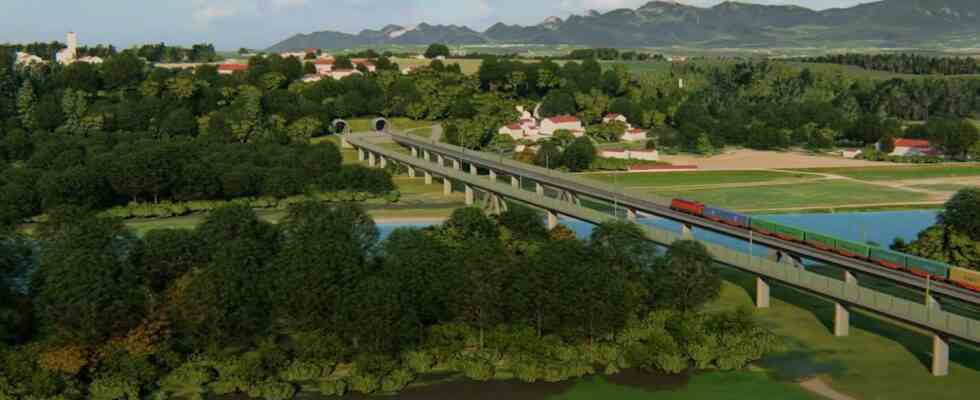In 2025, the Bundestag is expected to be able to make a final decision on Deutsche Bahn’s plans for two new feeder tracks towards the Brenner Base Tunnel. If the cost estimate, which is now one and a half years old, is to be retained until then, then the major project will cost at least seven billion euros in the Rosenheim district alone, because in view of the protests in the region, the railway and the federal government have decided on a route almost two-thirds of which runs underground. Adding a further 14 kilometers of tunnel north of the city of Rosenheim for an additional three billion euros for crossing the Inn has now been ruled out for themselves by the railway planners. Politicians from the region are disappointed and combative.
In the meantime, 20 local citizens’ initiatives doubt that the new German line to the Brenner Base Tunnel, which has long been under construction between Austria and Italy, is necessary. There is a consensus across the region that the route must largely disappear underground in order to have a political chance. The government of Upper Bavaria therefore instructed the planners at the beginning of last year to examine two tunnels under the Inn in the south near the border with Austria and north of Rosenheim between Ostermünchen and Stephanskirchen. The railway has now included the tunnel in the south in its plans, but crossing under the Inn north of Rosenheim, which would then immediately turn into a tunnel under Stephanskirchen, appears to be technically possible, but “highly complex and risky”.
Cost shouldn’t be the only deciding factor
Because of the necessary tunnel depth under the Inn and the generally low gradient tolerance of railways west of the Inn, the entire route would only come to the surface very late, which, according to Bahn, would necessitate a huge trough structure and an underground station for Ostermünchen. “Combined with the tunnel route in the Stephanskirchen area planned by DB anyway, this would result in a continuous tunnel with a length of between 19.4 and 34.3 kilometers,” explains DB project manager Matthias Neumaier. The exact length depends on the still open question of whether the route between Riedering and the A 8 should also run above or below ground. If a railway tunnel is longer than 20 kilometers, emergency stops have to be created at great expense.
Neumaier emphasizes that due to legal regulations, the railways have no way of planning further on a northern crossing under the Inn. At the same time, he points out that the municipalities concerned could address their demands for such a tunnel to the Bundestag. The Rosenheim district administrator Otto Lederer (CSU) is already arguing in this direction: The costs alone should therefore “not be the decisive point, since numerous citizens of the district, sensitive natural areas and agricultural livelihoods would be massively affected by an above-ground route”. In addition, it is necessary to finally think beyond the district border to Ebersberg and to examine a relocation of the connection point near Ostermünchen in a northwesterly direction.
Rosenheim’s Lord Mayor Andreas March (CSU) takes the same line: “I believe that with a connection point further north of Ostermünchen, the tunnel solutions and rail deepenings introduced by DB are not necessary.” But this was not checked at all. Tunneling under the Inn will be a core demand of the Bundestag. The CSU MP Daniela Ludwig is currently sitting in parliament for the constituency. For them, too, the DB test results are “unacceptable in this form”. The railway must rework and also make the additional costs of three billion euros understandable.

